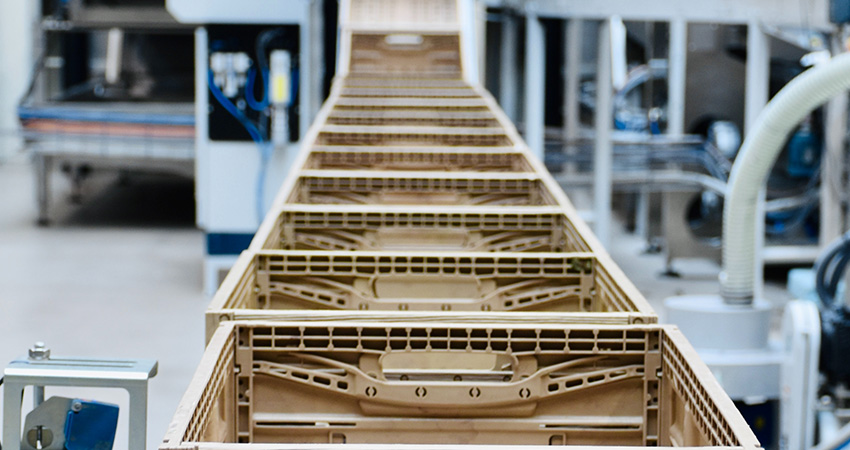To say 2020 was a curveball for most retailers would be a gross understatement. While Americans suffered and many small businesses closed permanently, multichannel businesses as a whole saw significantly higher volumes, largely from direct-to-consumer orders. The difficulty was in trying to keep workers safe and have enough labor to ship orders without falling more than a few days behind. For some clients, the goal was to merely not fall more than 10-14 days behind.
The start of 2021 brings more questions. Will order demand continue at the same volume? How will it change? The questions we continually field from clients deal with meeting demand in the midst of labor challenges. For many, this means moving toward automation in order to decrease the amount of labor and its increasing costs. Below are two examples of how companies are dealing with increased demand for order throughput by using cost-justified automation.
Fulfillment automation comes in many forms. For some, it involves fairly straightforward conveyor and sortation systems. For others, it means evaluating goods to person picking automation or robotics. In either case, DTC companies are moving rapidly to reduce their labor dependence. U.S. companies will be faced with multiple challenges in the coming years from increased minimum wage rates to challenges to right-to-work laws. Amazon is in the middle of a contentious vote with workers to unionize. If passed, it will dramatically increase their operating costs.
Example One: Outdoor Products Company
This company saw a major uptick in demand in the spring of 2020 as people were socially distancing with outdoor sports. Orders for all items related to hiking, fishing and paddling were pouring in, with demand 50% higher than forecast. The labor market, including staffing agencies, was already strained, leading to a 14-day order backlog. The existing workforce was calling out at a rate of about 30%. Many temp workers weren’t lasting longer than a day or two under the pressure.
After the data analysis, fulfillment automation solutions presented include utilizing conveyors for inbound and zone picking, as well as outbound shipments to eliminate worker travel times. To facilitate picking efficiencies, a multi-tier pick module and goods-to-person picking will be implemented. The projected labor savings are expected to be 30%-35% and complete the forecasted order volume in a single shift.
Example Two: Hard Goods Company
This company found itself amid a labor war in its market. Amazon was going to buy the labor it needed to meet increased demand. Companies in the area were forced to pay much higher rates to try and retain and attract the workforce needed to fulfill orders.
The picking was reasonably efficient. With a few tweaks and some changes to the packing and shipping lines, the company experienced decreased bottlenecks and headcount on the outbound side. Roughly 65% of orders could be picked directly to the carton, flowing directly to a sealer through cartonization and bypassing traditional pack stations. In addition, manual functions such as weighing, label printing and application are being replaced by a weigh-in-motion scale and automated print and apply. Another benefit to these fulfillment automation upgrades is that the FC can now perform a secondary weight check on the order to catch potential errors.
It’s important to note that neither of these companies is a large-scale multichannel retailer. The smaller of the two does roughly $35-$40 million in gross sales. In both examples, the payback on these significant investments will be roughly 36 months. Afterwards, they will continue generating annual savings upwards of $1 million. In addition, each company will be able to dramatically increase its throughput before needing to reinvest in technology and equipment.
Move to $15 Per Hour?
Business owners are faced with a huge problem. We all want our people to be able to take care of their families but we don’t want to lose or impair our businesses. In a 2019 study, the CBO found that raising the federal minimum wage to $15 an hour by 2025 could cost 1.3 million Americans jobs, boost the pay of about 27 million workers and lift 1.3 million out of poverty. It could also cost 3.8 million jobs.
In the ecommerce fulfillment center, once robots and automation investments are made and implemented, some affected positions may be reassigned but others inevitably are redundant and eliminated. Labor savings is one of the twin pillar benefits of this approach, along with efficiency and performance gains.
Return on Investment
As part of your analysis, you need to look at future labor costs as well as recruiting and training. With high employee turnover rates, companies are investing significant dollars worker training, only to have them leave prior to becoming fully productive. Many companies look at the lost payroll and benefits such as healthcare tied to this turnover, but it’s not uncommon to see some of the following average costs relative to payroll expense:
- Training costs: 3%-5%
- Unemployment/workers comp: 7%-9%
- Hiring, recruiting and HR: 23%-25%
Companies must evaluate the impact and risk of operations labor. They must also determine how this labor cost and ROI, will look 3-5 years out. With further capital and lending costs, many are choosing to invest in fulfillment automation that will pay off for many years to come.
Brian Barry is President of F. Curtis Barry & Company

